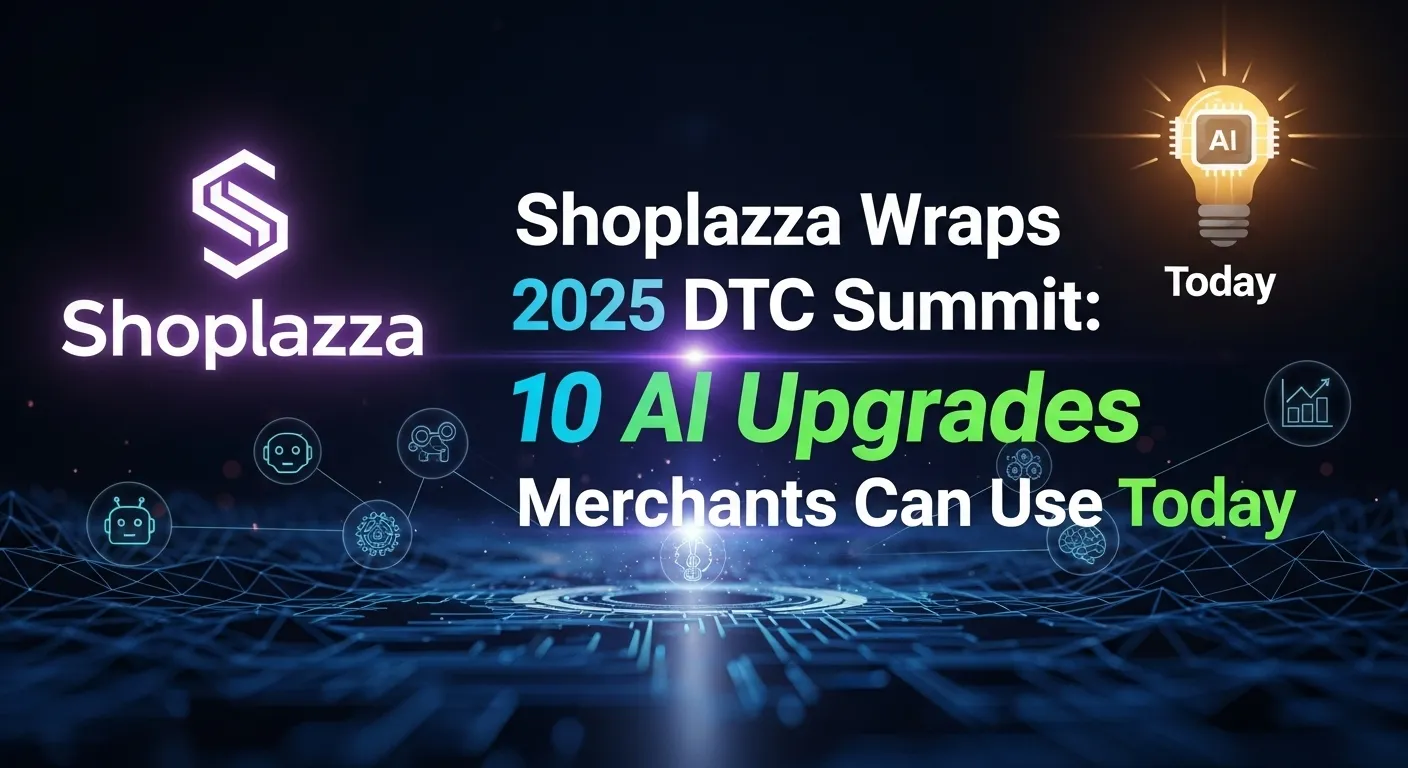Shoplazza just closed its 2025 DTC Summit with a flurry of real, measurable AI gains—think faster launches, smarter search, and checkout speeds that feel instant. If “AI for commerce” usually sounds vague, this one comes with hard numbers.
What Is “Shoplazza Wraps 2025 DTC Summit with AI Innovations”?
It’s the official wrap of Shoplazza’s annual DTC event showcasing platform-wide upgrades. The 2025 edition drew ~800 merchants on-site, 2,500+ registrations, and 35,000+ livestream viewers—anchored by AI features that cut launch times (from days to minutes), boost Lighthouse scores (95+), and keep mega-catalog stores snappy at scale.
How the New AI Stack Works
Performance-first core: Global acceleration and modern rendering pushed P95 homepage loads to ~1.9s and PLP loads to ~2.0s—beating typical e-commerce baselines—while million-SKU stores maintain sub-1.2s P99 page loads during peaks.
AI that earns its keep: An upgraded translation engine processes 100 product descriptions in 0.8s across 109 languages; AI search/recs lift conversion by up to 30% and push ARPU beyond $2; loyalty/push automation raises member sign-ups ~77% and overall conversion by double digits.
Checkout tuned for revenue: Payment pages render in <0.8s, price calculations finish at P95 ~0.6s, responses at P95 ~1.5s; one-click checkout now covers ~70% of options and drives ~43% of orders, with authorization rates trending higher.
Reliability as a feature: 99.99% uptime, <50 minutes downtime over the past year; 10B+ API calls with 80%+ of functions exposed to integrate ERP/CRM and partners—critical for scaling operations safely.
Benefits & Use Cases
- Faster time-to-revenue — Launch complete multilingual stores in ~30 minutes (vs. days) to capture seasonal windows and influencers’ traffic spikes.
- Higher basket value — AI search and bundled recommendations nudge AOV and ARPU with context-aware suggestions.
- Checkout that converts — Sub-second pages and one-click coverage reduce drop-off on mobile and cross-border flows.
- Use case: A fashion brand localizes to 5 markets overnight using 109-language translation, ships influencer traffic to a fast PLP, and monetizes via loyalty + push.
Costs/Pricing
Shoplazza offers tiered subscriptions with transaction fees that decrease at higher tiers. Public listings show plans starting around $28–$39/month for Basic, moving up through Advanced/Ultimate, with Enterprise/Pro tiers offering lower commission and more staff accounts. Annual billing can discount rates; a trial is available. Your total cost will also include domains, apps, and payment processing fees—budget accordingly for growth phases.
Local Insights (GEO)
Bangladesh, India & ASEAN: Faster multilingual setup (109 languages) plus one-click coverage helps brands sell across Bengali, Hindi, Malay/Indonesian, and English storefronts. The uplift in authorization rates and fraud controls is especially useful for cross-border COD alternatives and local wallets common in South Asia and Southeast Asia. Expect smoother promotions during 11.11/12.12, Ramadan, and Pohela Boishakh spikes thanks to the platform’s active-active deployments and canary releases.
Alternatives & Comparisons
- Shopify: Pros — massive app ecosystem, mature ops; Cons — add-on costs can stack; AI performance claims vary by theme/app stack.
- BigCommerce: Pros — open APIs, strong B2B; Cons — customization complexity; performance depends on build discipline.
- WooCommerce (WordPress): Pros — ultimate flexibility, plugin universe; Cons — hosting/performance tuning on you; add-ons and dev time increase TCO.
Step-by-Step Guide
- Speed audit: Benchmark your current Lighthouse, P95/P99 load metrics, and checkout response times. Prioritize pages that print money (homepage, PLP, PDP, cart, payment).
- AI setup: Enable AI search/recs, translation, and loyalty/push. Localize top SKUs first; map automation to promo calendars and creator drops.
- Payments & risk: Turn on one-click where supported, align routing + RDR/Ethoca to your top markets, and test auth uplift vs. legacy gateways.
FAQs
Is the 30-minute store launch realistic?
For template-based builds with standard catalogs, yes. Complex custom themes, integrations, or unique tax/shipping logic will take longer, but the fast path is a real option for MVPs and market tests.
How much of the lift is truly “AI” vs. tuning?
Both. Gains come from infrastructure (rendering, caching, global acceleration) and AI (translation, search/recs, loyalty automation). The key is they’re shipping together, so the business impact compounds.
Will it scale during peak sales?
The platform reports 99.99% uptime, canary releases, automated rollback, and sub-second P99 for million-SKU stores—exactly the conditions you want for Singles’ Day/Cyber season.
Bottom Line
Shoplazza’s 2025 DTC Summit didn’t just talk about AI—it delivered speed, conversion, and reliability metrics merchants care about. If you’re expanding across languages or running high-SKU catalogs with promo-heavy calendars, these upgrades are built to bank real gains.

